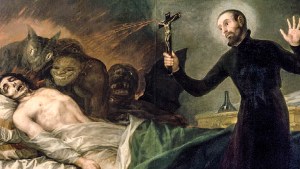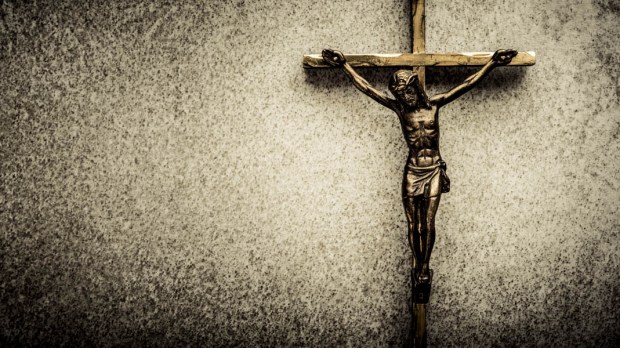If there’s something weird, and it don’t look good, whatever you do, don’t call the Ghostbusters. In most cases of possible demonic activity, whether in a haunted house or a possessed person, only an authorized priest can expel the presence of evil.
Ghostbusters won’t be able to do anything and may make things worse. The devil thrives on tricking humans and the presence of paranormal investigators will only give him a larger audience for his show.
If you truly want to investigate strange and unsettling activity, only an exorcist can help. They have been trained how to approach each situation in prayer and can identify whether or not the demonic is involved.
However, exorcists are not listed on Yelp and do not have their information readily available to the public. If you search Google for “how to contact an exorcist,” countless sites appear, many of them claiming to have exorcists on staff. Some state that they are adherents of the Old Roman Catholic Church, and even have “bishops” and “priests” who work for them. Do not contact them. Whoever they are, they are not acting with the authority of the Catholic Church.
The first step in contacting an exorcist istalking with your local parish priest (or spiritual director if you have one). Your pastor was assigned by the local bishop to be the shepherd of your soul and has a certain authority in the spiritual realm. He can guide you, ask questions, and advise you on the next step.
If you think your pastor is not listening to your concerns, consult other priests in the area whom you trust. It is extremely important to talk with someone from the Church about the issue, as it is always important to receive feedback from a third party.
The second step is determined by the type of possible demonic activity. If it is regarding a house, then the priest you first contacted will likely come out and bless the house. If the problem is with an individual, then a psychological examination may be performed before going further.
The USCCB explains the reasoning behind this step of the process, “It is advisable that every diocese establish a protocol to respond to inquiries made by the faithful who claim to be demonically afflicted. As part of the protocol, an assessment should occur to determine the true state of the person. Only after a thorough examination including medical, psychological, and psychiatric testing might the person be referred to the exorcist for a final determination regarding demonic possession. To be clear, the actual determination of whether a member of the faithful is genuinely possessed by the devil is made by the Church, even if individuals claim to be possessed through their own self-diagnosis or psychosis.”
Determining the source of the problem is always a balancing act, “The exorcist is instructed to employ the ‘utmost circumspection and prudence’ before proceeding to the rite. Throughout his ministry, an exorcist must establish a balance within his own mind between not believing too easily that the devil is responsible for what is manifesting, and attributing all possible manifestations solely to a natural, organic source.”
If the presence of evil persists and other natural causes are ruled out, the third step typically involves contacting the designated exorcist. Sometimes your parish priest may immediately refer you to the exorcist, but often even the parish priest does not know who he is. Sometimes only the bishop and those who work with him directly know who that is.
Many dioceses in the United States do not have a trained exorcist and may have to consult other bishops to find an exorcist nearby. Major exorcisms are very rare and the devil’s presence is often cast out through minor exorcisms.
In the end, exorcisms are a real part of the Church’s ministry, but should be handled with utmost care.

Read more:
Can anyone perform exorcisms?

Read more:
Watch Fr. Gabriele Amorth share secrets for driving out the devil

